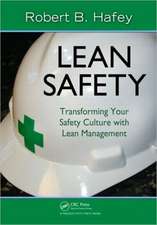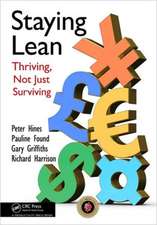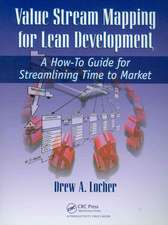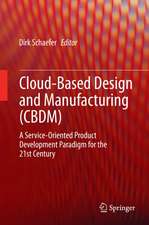The Palgrave Handbook of Creativity at Work
Editat de Lee Martin, Nick Wilsonen Limba Engleză Hardback – 7 aug 2018
| Toate formatele și edițiile | Preț | Express |
|---|---|---|
| Paperback (1) | 1126.17 lei 6-8 săpt. | |
| Springer International Publishing – 26 dec 2018 | 1126.17 lei 6-8 săpt. | |
| Hardback (1) | 1568.29 lei 6-8 săpt. | |
| Springer International Publishing – 7 aug 2018 | 1568.29 lei 6-8 săpt. |
Preț: 1568.29 lei
Preț vechi: 1912.55 lei
-18% Nou
Puncte Express: 2352
Preț estimativ în valută:
300.10€ • 309.59$ • 250.43£
300.10€ • 309.59$ • 250.43£
Carte tipărită la comandă
Livrare economică 27 martie-10 aprilie
Preluare comenzi: 021 569.72.76
Specificații
ISBN-13: 9783319773490
ISBN-10: 3319773496
Pagini: 703
Ilustrații: XXV, 658 p. 28 illus.
Dimensiuni: 155 x 235 mm
Greutate: 1.13 kg
Ediția:1st ed. 2018
Editura: Springer International Publishing
Colecția Palgrave Macmillan
Locul publicării:Cham, Switzerland
ISBN-10: 3319773496
Pagini: 703
Ilustrații: XXV, 658 p. 28 illus.
Dimensiuni: 155 x 235 mm
Greutate: 1.13 kg
Ediția:1st ed. 2018
Editura: Springer International Publishing
Colecția Palgrave Macmillan
Locul publicării:Cham, Switzerland
Cuprins
Part I. Working with Creativity.- 1. Creativity at Work: Themes, Issues and Challenges; Lee Martin.- Measuring Creativity at Work; Xavier Caroff, Justine Massu, Todd Lubart.- 3. Creativity in the Context of Multiple Goals; Kerrie Unsworth.- 4. An Exploration of the Tension between Tradition and Innovation; Simon Poole.- 5. Mysteries of Creative Process: Explorations at Work and in Daily Life; Terri Goslin-Jones, Ruth Richards.- 6. “Yeah, that’s what I am now”: Affordances, Action and Creative Identity; Mary Kay Culpepper.- 7. “Dropping out and working”: The vocational Narratives of Creative Graduates; Scott Brook, Roberta Comunian.- Part II. Putting Creativity to Work.- 8. Creativity and the Web of Life; Jonathan Milne.- 9. Creativity and the Visual Arts; Peter Adsett, Mary Alice Lee.- 10. Social-Creativity-in-Practice: The theory is the Practice; Alice Wilson Milne.- 11. Exploring Creative Research Methodologies in the Humanities; Toby Young.-12. Sharing or Integration: Rethinking the Localization of Co-working Spaces in Shanghai; Weiyi Wu.- 13. Enhancing Creativity through Workspace Design; Louise Suckley, John Nicholson.- 14. The Darkness In Janusian Thinking: Considering the Relationship between Creativity in the Workplace and Employee Well-being; Michael Mustafa, Hazel Melanie Ramos.- 15. Creativity: Transformation of Adversity; Alia Weston and J. Miguel Imas.- Part III. Working in the Creative Economy.- 16. “Hopeful Work” and the Creative Economy; David Wright.- 17. Creativity as Development: Discourse, Ideology and Practice; Jonathan Vickery.- 18. Women Entrepreneurs in Saudi Arabia: Creative Responses to Gendered Opportunities; Deema Sonbol.- 19. The Meta-Poetics of Creative Labour in the University; Penny Newell.- 20. Creativity and the Law; Tanya Aplin.- 21. Entrepreneurship and Creativity Education in China: Reflections from an Experience-based Approach to an Introductory Module in Entrepreneurship; Tori Y. Huang, Felix Arndt.- 22. “Essential–Passion for Music”: Affirming, Critiquing and Practicing Passionate Work in Creative Industries; Toby Bennett.- 23. Entrepreneurship in Music and the Goldilocks Principle: “Highway to Hell” or “Together Forever”?; Nick Wilson.- Part IV: Making Creativity Work.- 24. Valuable Creativity: Rediscovering Purpose; Chris Bilton.- 25. Creativity Off the Clock: Re-conceptualizing Creative Careers; Jonathan Gross.- 26. Embedding an Everyday Culture of Creativity: Making Creativity Work in a University Context; Laura Speers, Nick Wilson.- 27. Social Media and the Future of Creativity at Work; Chris James Carter.- 28. Creativity at Work and Sustainable Product Development: Practitioner Perspectives from the Clothing Industry; Helen Goworek, Lynn Oxborrow, Angharad McLaren, Stella Claxton, Tim Cooper, Helen Hill.- 29. Disruption on the Dancefloor: Understanding Creativity as Openness and Emergence; Brigid McClure.- 30. Making Creativity Work: Marking Out New Territories; Birgit Wildt.- 31. Creativity at Work - Who Cares? Towards an Ethics of Creativity as a Structured Practice of Care; Nick Wilson.
Notă biografică
Lee Martin is Associate Professor of Creativity in the Centre for Cultural and Media Policy Studies, University of Warwick, UK. His research critically explores the nature of creativity and the creative process, as well as understanding how to develop sustainable creative practices and cultures. Nick Wilson is Reader in Creativity, Arts & Cultural Management at the Department of Culture, Media and Creative Industries, King’s College London, where he founded the MA in Arts & Cultural Management. His research focuses on cultural opportunities: what are they, who has them, and how can they be supported and enabled for human flourishing?
Textul de pe ultima copertă
This Handbook provides authoritative up-to-date scholarship and debate concerning creativity at work, and offers a timely opportunity to re-evaluate our understanding of creativity, work, and the pivotal relationship between them. Far from being a new arrival on the scene, the context of work has always been a place shaped and sharpened by creativity, as well as a site that determines, where, when, how, and for whom creativity emerges. Structured in four parts – Working with Creativity (the present); Putting Creativity to Work (in an organizational context); Working in the Creative Industries (creative labour); and Making Creativity Work (the future) – the Handbook is an inspirational learning resource, helping us to work with creativity in innovative ways. Providing a cutting edge, interdisciplinary, diverse, and critical collection of academic and practitioner insights, this Handbook ultimately conveys a message of hope: if we take better care of creativity, our creativity will better care for us.
Caracteristici
Provides a broad and comprehensive scope, and is not limited to the creative industries Critically engages with topics from a wide variety of perspectives including professionalisation, regulation, gender, power, digitalisation and globalisation Includes contributions from international authors from the UK, Europe, the US, Australia and New Zealand


















